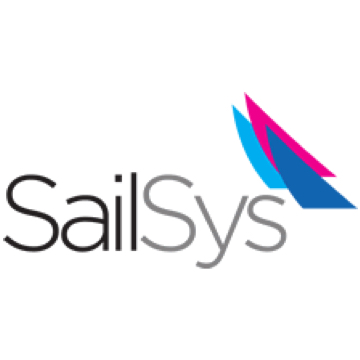An Introduction and overview to handicapping
SailSys Support
Last Update 2 years ago
Handicapping is used by clubs in a range of methods, generally with a view to achieving specific club goals. When conducting a competitive keelboat regatta this will be to achieve the fairest results without contention. However, for most, if not all club events, the goal is likely to ensure that the maximum number of competitors achieve a podium finish over the course of the series, a social twilight for example.
At its heart handicapping aims to equalise each competitor’s chance of winning.
Core to the thesis of SailSys’s proprietary PHS handicapping is that every compliant yacht (paid up and safe) should be eligible to win on the day. Importantly this is not subject to the competitor’s ability versus other competitors in the fleet, but relative to their past performance. If the conditions and the course suit the yacht, and the crew sail the boat above their norm, they should enjoy a good result.
Two applications can help confirm if the handicapping is fair and supported by sound mathematical logic:
- If you were to re-run the race with the new resultant handicaps, then the results shouldn’t be that dissimilar; if the winning boat now comes in the lower half of the fleet, then the handicapping is likely too punitive....the corollary is;
- If the same course is set next week, the conditions are the same, and the crew sail the yacht as well as the previous week, then while we would rather not see last week’s winner getting the wine, they should most certainly be in contention and not handicapped to the back of the fleet.
SailSys handicapping is the oldest “algorithm-driven” logic in Australia, starting with a concept in 1971. Over that time, the methodology has been refined into one of the simplest and most reliable handicapping methodologies, trusted by many. While some have attempted to replicate the underlying logic, it has never been reproduced accurately.
At its heart, there are several core tenets:
- Every boat deserves its day - if the course and conditions favour a particular yacht, then we should not be attempting to handicap them out of contention;
- Changes in handicaps week-to-week should not be aggressive. Not only does this disincentive competitors, but it can also encourage sandbagging;
- Handicaps don’t have to move every week. Light and changeable winds, strung out fleets or below-par performance can be automatically excluded from weekly updates with ease using SailSys, be it, a single boat, a division or the entire fleet;
- It is founded in sound mathematical logic and not arbitrary weekly movements;
- Executed correctly, a handicapping system should remove the weekly burden from the sailing office and the long-suffering volunteer, who, as a handicapper, is all too often a target for all competitors to harass.
Handicapping can appear complicated, but the nuance and finesse of the SailSys mathematical algorithms driven by only a few minor yet powerful settings make SailSys brilliantly simple and rewarding to use.
Underpinning the platform’s handicapping is the most extensive and trusted data centre of historic handicap data, which can be searched while processing entries, whether it is the yacht’s past handicap at your club or another, or the past handicaps of a similar yacht discoverable by name, sail number, make or model.
Notably, all of these handicaps adhere to a consistent scale, not too dissimilar to how IRC adheres to a scale. This means that handicaps for a competitor sailing at multiple clubs are more consistent, that divisional allocation is more straightforward and handicaps from other clubs are transferrable to yours and visa versa.
This is especially important when clubs wish to combine events for mutual benefit. Competitors find comfort in handicapping consistency, and the handicapper’s job of bringing together a disparate fleet from multiple clubs is now a breeze. When coupled with SailSys’s unique Series-In-Series, the future of combined fleets is here today. SailSys has been responsible for the successful Sydney Harbour Combined Winter racing for five years and has been running such “Combined” events as the Australia Day Regatta on Sydney Harbour for over 20 years.

